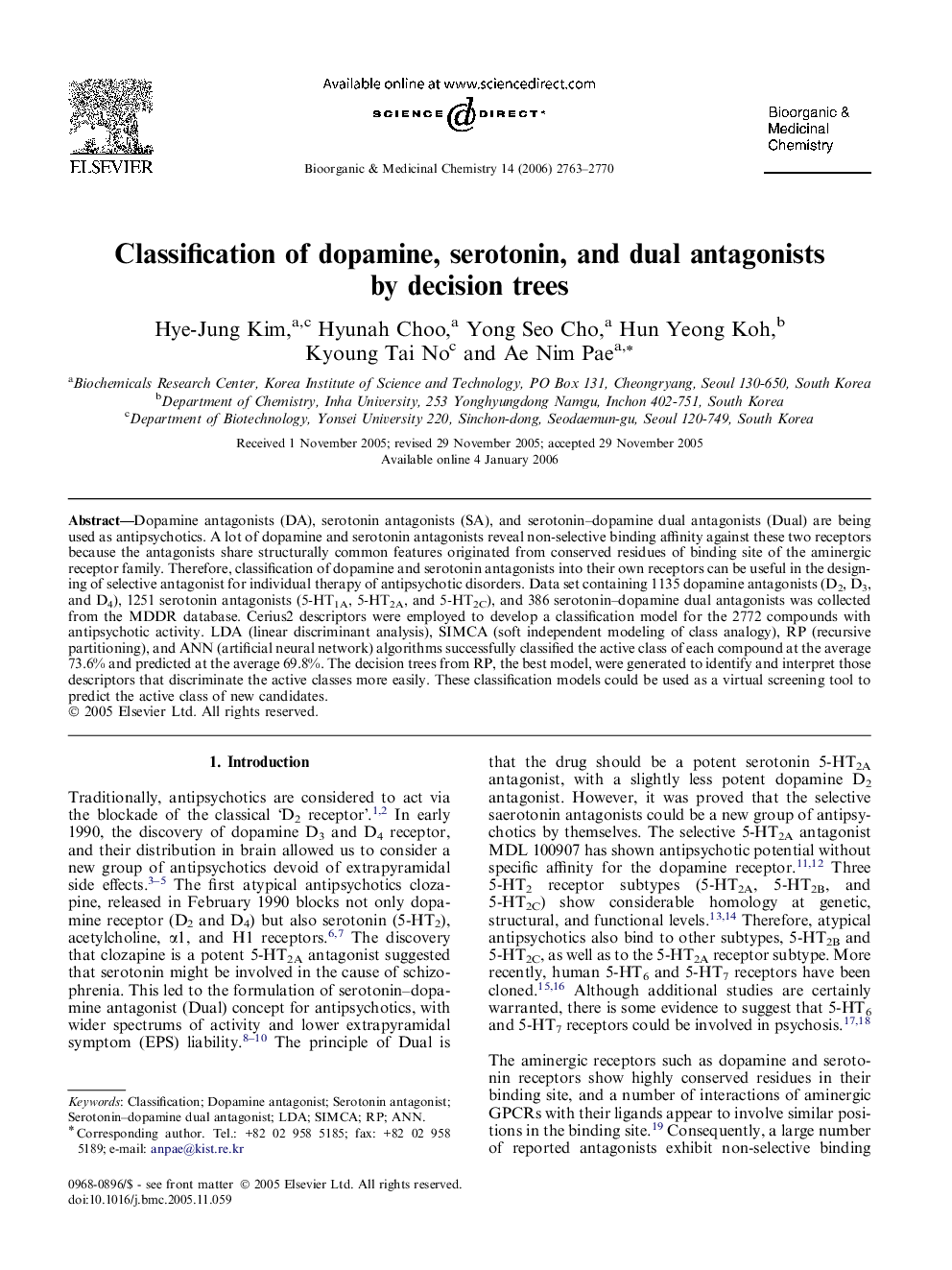| کد مقاله | کد نشریه | سال انتشار | مقاله انگلیسی | نسخه تمام متن |
|---|---|---|---|---|
| 1362417 | 981487 | 2006 | 8 صفحه PDF | دانلود رایگان |

Dopamine antagonists (DA), serotonin antagonists (SA), and serotonin–dopamine dual antagonists (Dual) are being used as antipsychotics. A lot of dopamine and serotonin antagonists reveal non-selective binding affinity against these two receptors because the antagonists share structurally common features originated from conserved residues of binding site of the aminergic receptor family. Therefore, classification of dopamine and serotonin antagonists into their own receptors can be useful in the designing of selective antagonist for individual therapy of antipsychotic disorders. Data set containing 1135 dopamine antagonists (D2, D3, and D4), 1251 serotonin antagonists (5-HT1A, 5-HT2A, and 5-HT2C), and 386 serotonin–dopamine dual antagonists was collected from the MDDR database. Cerius2 descriptors were employed to develop a classification model for the 2772 compounds with antipsychotic activity. LDA (linear discriminant analysis), SIMCA (soft independent modeling of class analogy), RP (recursive partitioning), and ANN (artificial neural network) algorithms successfully classified the active class of each compound at the average 73.6% and predicted at the average 69.8%. The decision trees from RP, the best model, were generated to identify and interpret those descriptors that discriminate the active classes more easily. These classification models could be used as a virtual screening tool to predict the active class of new candidates.
Classification model for dopamine antagonists, serotonin antagonist, and serotonin–dopamine dual antagonists was generated using four different classification techniques: LDA (linear discriminant analysis) SIMCA (soft independent modeling of class analogy), RP (recursive partitioning), and ANN (artificial neural networks). The comprehensive structural difference between DA and SA was identified by decisive factors of recursive partitioning trees to design selective antagonist for individual therapy of antipsychotic disorders.
Journal: Bioorganic & Medicinal Chemistry - Volume 14, Issue 8, 15 April 2006, Pages 2763–2770